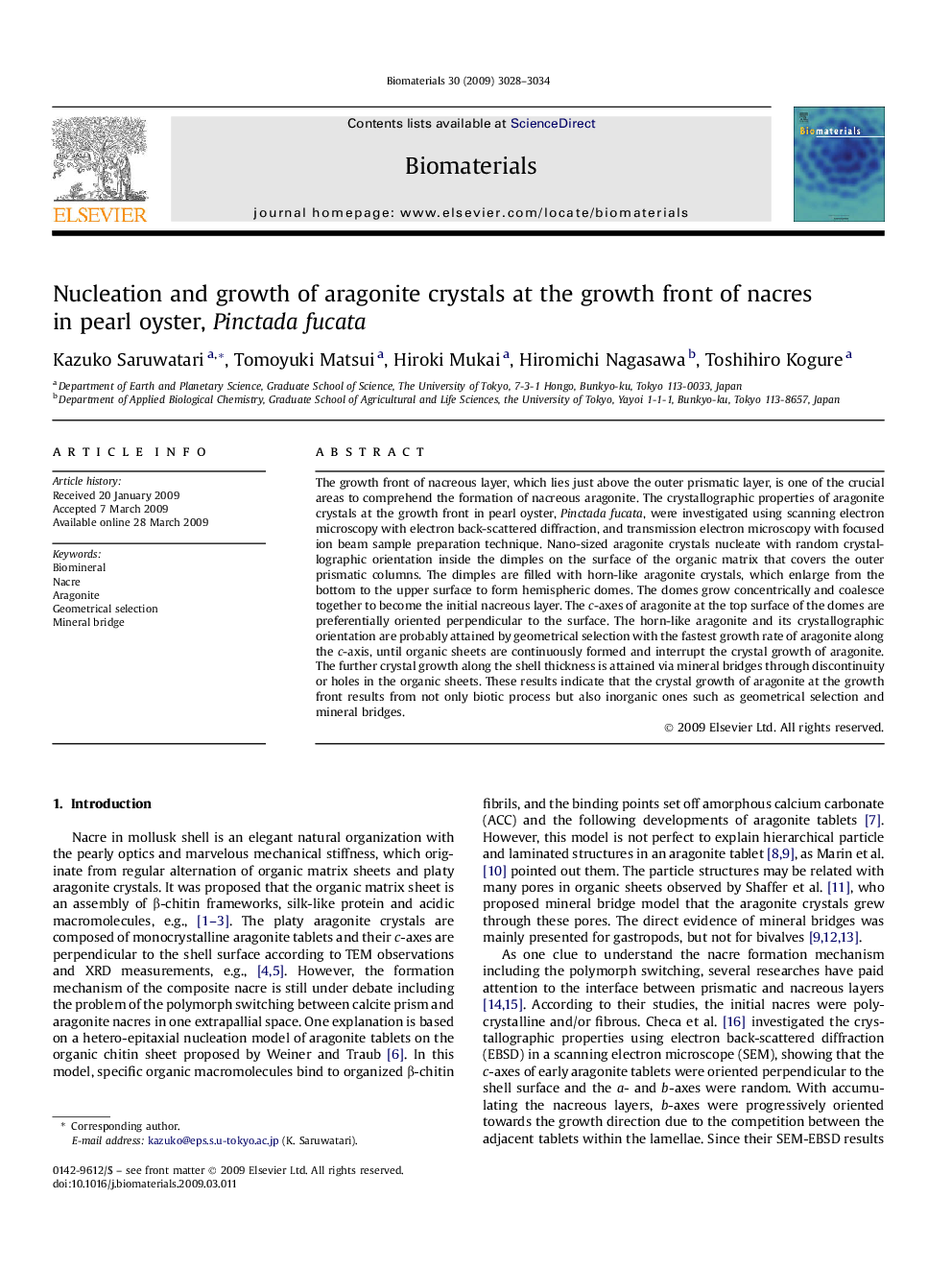| Article ID | Journal | Published Year | Pages | File Type |
|---|---|---|---|---|
| 8648 | Biomaterials | 2009 | 7 Pages |
The growth front of nacreous layer, which lies just above the outer prismatic layer, is one of the crucial areas to comprehend the formation of nacreous aragonite. The crystallographic properties of aragonite crystals at the growth front in pearl oyster, Pinctada fucata, were investigated using scanning electron microscopy with electron back-scattered diffraction, and transmission electron microscopy with focused ion beam sample preparation technique. Nano-sized aragonite crystals nucleate with random crystallographic orientation inside the dimples on the surface of the organic matrix that covers the outer prismatic columns. The dimples are filled with horn-like aragonite crystals, which enlarge from the bottom to the upper surface to form hemispheric domes. The domes grow concentrically and coalesce together to become the initial nacreous layer. The c-axes of aragonite at the top surface of the domes are preferentially oriented perpendicular to the surface. The horn-like aragonite and its crystallographic orientation are probably attained by geometrical selection with the fastest growth rate of aragonite along the c-axis, until organic sheets are continuously formed and interrupt the crystal growth of aragonite. The further crystal growth along the shell thickness is attained via mineral bridges through discontinuity or holes in the organic sheets. These results indicate that the crystal growth of aragonite at the growth front results from not only biotic process but also inorganic ones such as geometrical selection and mineral bridges.
